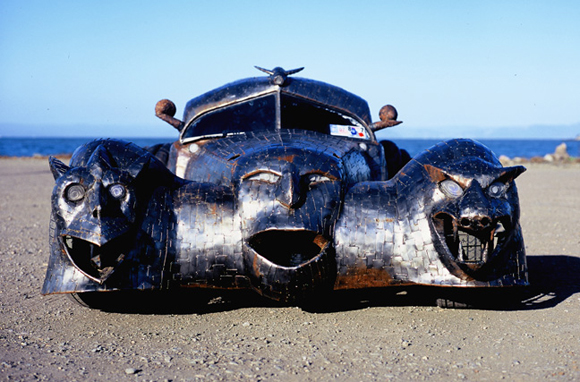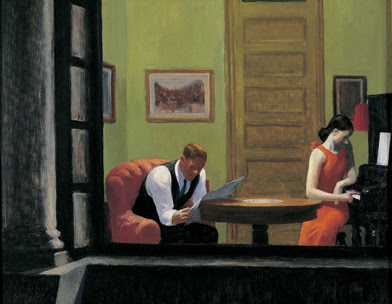
(Thank you for the patience, the comments, the e-mails and links. I appreciate it all.)


Should we resist the myth of an art without a context?
Doris Solcedo's
Shibboleth at Tate's Turbine Hall has sparked controversy for an unusual reason:
one blogger found her work to be much better than what the artist had to say about it:
There is little in the world of art more deflating (...) than hearing an artist tell you what a work represents.
Considering the way Solcedo appears to have been talking about the work, it seems only fair to consider it a turn-off. You get this huge, rich piece, and a comment, a perspective that seems simply poor. One begins to wonder if it's really worth all the fuss. After all, it's a difficult exercise to go back from the work to the idea that
Doris Salcedo would like you to know that a crack in the floor represents borders, the experience of immigrants and the experience of racial hatred. She would also like you to know that racism is bad and that Europeans are bad for being racist.
However, I wouldn't give up on Doris that quickly. For several reasons.
For one, every artist has the right to think of his work what he wishes. And if the work surges from a need to fight racism, then be it. Many a brilliant work of art has been made through a very local inspiration. Why should she censor herself when speaking about it, then? Oftentimes, we can hardly agree with the artist's point of view, and from time to time the artist herself criticizes her standpoint after a certain lapse of time. But this does not necessarily discredit the work. Rather, it shows how the very limitations of an artist can participate in the creation of wonderful works (for some extreme examples, think of Leni Riefenstahl or the Soviet constructivists).
The artist's work is the artist's work. This is not as always as obvious as it might seem, given the various avantgarde adventures into questioning the work as work and/or the artist as the artist, on one hand, and the value the art market seems to give to the meta-work level, on the other. Still, we are free to go back to the work. To the object, the sign, the gesture, the mark. To what we consider of relevance. The work is there to be eaten up, to be devoured no matter what it takes. If we need to abandon the artist to do it, so be it.
I re-read what I have just written, and I don't always agree with it. The principle is fine, but in practice things aren't as simple. How can I forget what I hear, what I read, what I see? Whatever the context, it is present. And the less we get from the work, the more we are bound to bind ourselves to what is around it. Which is why a conceptual work is so difficult to isolate from its references. And why a crack can be so many things.
But here are two other points:
//considering we do listen to the artist, even if we don't want to, let us first go and see the title up.
A 'shibboleth' is a custom, phrase or use of language that acts as a test of belonging to a particular social group or class. To someone attentive to the context, this can very well be a guide. You might consider it too narrow already, too restraining and bluntly political, but then again, you might just embrace it as a proposed "appreciation reference". And then, it's a new game, isn't it?
//why does a crack
need to be so many things? What is this constant necessity we, artists, feel to
not say what something is to us? Of course, it can be more than anything in particular. And we don't want to ruin the experience for the spectator. But then again, it might just come out of a particular urge, question, opinion. What is so unacceptable about admitting that? Does every (good) work of art need to have a hundred possibilities, and does its creator need to embrace them all? Mind you, we are not in the zone of imposed lectures any more, only, maybe, of an honest artist's statement that gets to the point: this is what I had in mind.
Another issue comes to mind. Considering we do accept the artist's "pragmatic" and political point of view, and see it as (I'll dare and use the word) a metaphor of a socially unfair world, what are we left with? What are we supposed to do about it? Will this act change a
single thing? What sort of conscience do we develop through these marvelous poetic politics? Or does it chiefly bring us closer to the appreciation of our total incapacity to do anything about what we see? Can this despair be fruitful? And what can this fruit actually be?








.jpg)
.jpg)
.jpg)


.jpg)





























